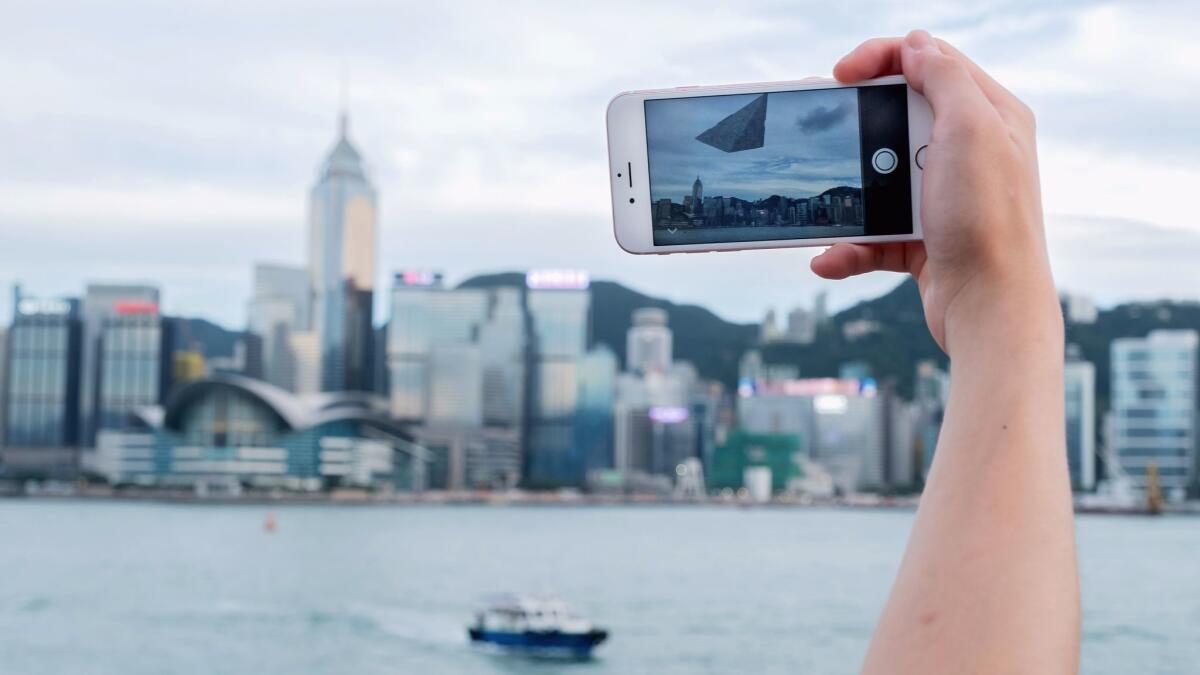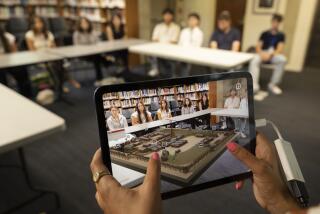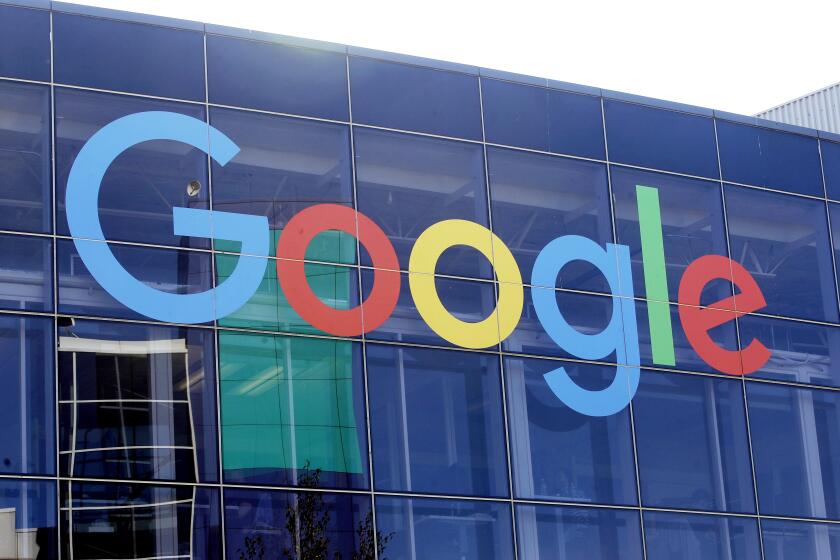New iPhones could make augmented reality a mainstream reality

- Share via
Reporting from San Francisco — The runaway success of “Pokémon Go” last year taught the world at least two things. One: Lots of people love Pokémon. And two: Creating good augmented reality — the kind that superimposes 3-D objects into the real world and convinces people they’re actually chasing a Pikachu — is really, really hard.
“It’s not so hard that it’s impossible,” said Jeff Kelley, an iOS developer at app design and development firm Detroit Labs. “But it’s hard enough that you’re probably not going to get a return on your investment.”
Previously, if a developer wanted to add augmented reality to an app, first they’d have to spend months building their own tools and performing a bunch of math to calculate how a 3-D object should look when light hits it from different angles, and how it interacts with real-world objects, Kelley said.
That high barrier to entry will all but disappear when iOS 11 launches Sept. 19 with AR Kit, a set of developer tools that takes out the hardest part of developing augmented reality experiences for the iPhone.
“As a developer, you don’t have to do all the hard math stuff to get it to work,” Kelley said. “The minimum time investment now goes way down.”
That means there soon could be a surge in the number of apps that feature augmented reality experiences, exposing more people to a technology that was once considered the purview of hardcore geeks.
Despite the enormous popularity of “Pokémon Go” last year, only 31% of Americans know what augmented reality is, according to a survey conducted in July by Skrite, a start-up that makes a social augmented reality app.
Like its more immersive cousin, virtual reality, tech companies have for years tried to bring augmented reality to the mainstream, with little success. Google’s infamous Google Glass — a head-mounted display — was a flop that drew criticism over its conspicuous design and potential for privacy violations (the device could be used to record people). Start-ups at the annual Consumer Electronics Show in Las Vegas year after year have hawked augmented reality screens that act as virtual dressing rooms, none of which have gained mass market adoption. And furniture stores and interior design firms have long offered tools to let people see what a sofa or coffee table might look like in their home, but these apps have been clunky or difficult to use.
Until “Pokémon Go,” most augmented reality experiences just weren’t very good, Kelley said. Even the most basic of experiences left much to be desired. Kelley recalls working on an app five years ago for wall decoration company Fathead, in which users could point a smartphone at a wall in their house and see how a Fathead wall sticker might look in their home. In order for it to work, though, users first had to print a PDF and stick it to their wall as a physical marker so that the app knew where to superimpose the virtual sticker.
With Apple’s AR Kit leveling the playing field, developers can spend less time worrying about the tech that powers augmented reality, and spend more time focusing on the experiences they want to create, Kelley said, which could ultimately lead to more experimentation and better products.
“The main push is that it’s priming the consumer field and the developer field,” said Gregory Curtin, whose Los Angeles firm CivicConnect works with city and transit agencies to integrate city data with augmented reality.
Curtin’s firm, which counts cities such as Palm Springs, San Diego and Mission Viejo among its clients, spent three years developing its own augmented reality platform, which can integrate transit schedules and commuter data so when a person opens a transit app and points their phone at a bus stop, the bus schedule appears on their screen.
Although a lower barrier to entry could mean CivicConnect will soon see more competition, Curtin welcomes it, because greater awareness of what augmented reality can do will mean more opportunities for developers in new markets.
Some challenges still will lie ahead, though.
AR Kit can solve the tech component, but many augmented reality experiences require 3-D art. Even Snapchat’s dancing hot dog, silly as it may be, had to be drawn and rendered by someone.
“For a lot of developers, that’s another difficult piece, because developers aren’t always good 3-D artists,” Kelley said.
The other challenge is that while the new iPhone 8 and iPhone X are optimized for augmented reality viewing, many phones — particularly cheaper options with lower-end cameras — aren’t. At a starting price of $699 for the iPhone 8 and $999 for the iPhone X, experiences made for those phones may exclude many potential users.
But it’ll be just a matter of time before the technology is readily available to everyone, developers said. Facebook already offers its own platform, AR Studio, for developers wanting to create augmented reality experiences for the social network, and dozens of third-party platforms such as Vuforia and EasyAR allow developers to create AR experiences across multiple platforms, including iOS and Android.
That Apple is throwing its weight behind AR Kit, with augmented reality-ready phones, is a big deal, developers said.
“I do think this will be a milestone in terms of changing the game,” Curtin said.
Twitter: @traceylien







